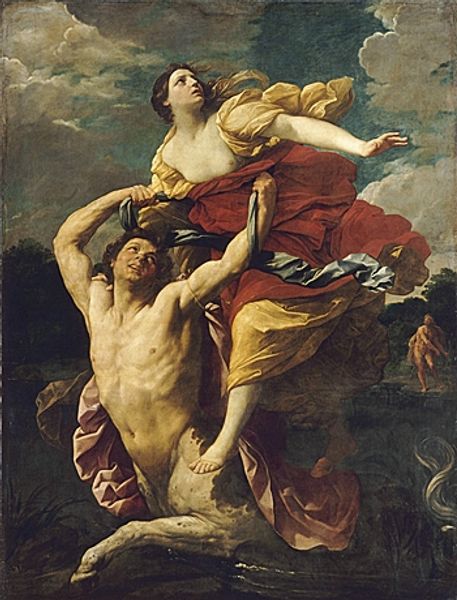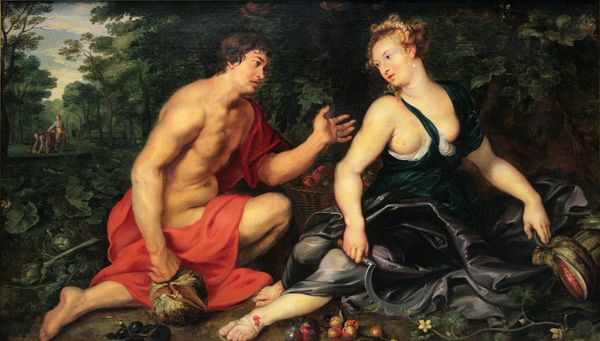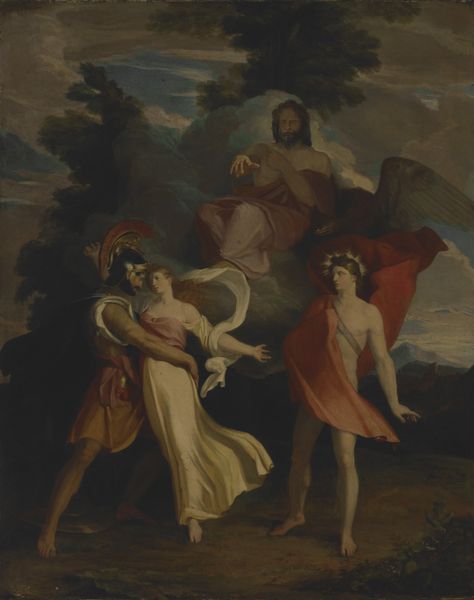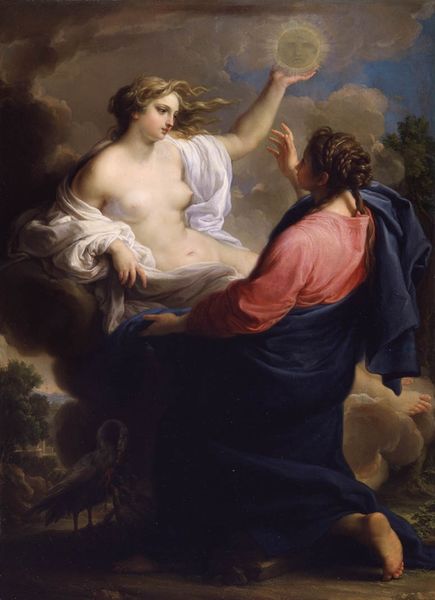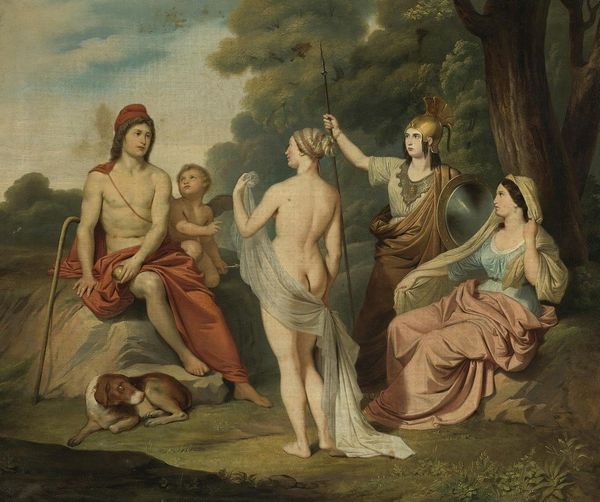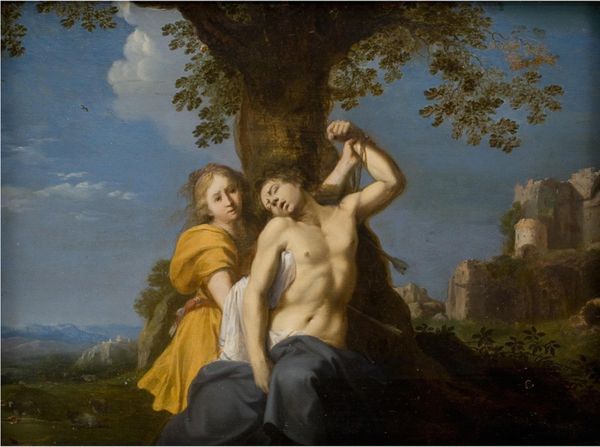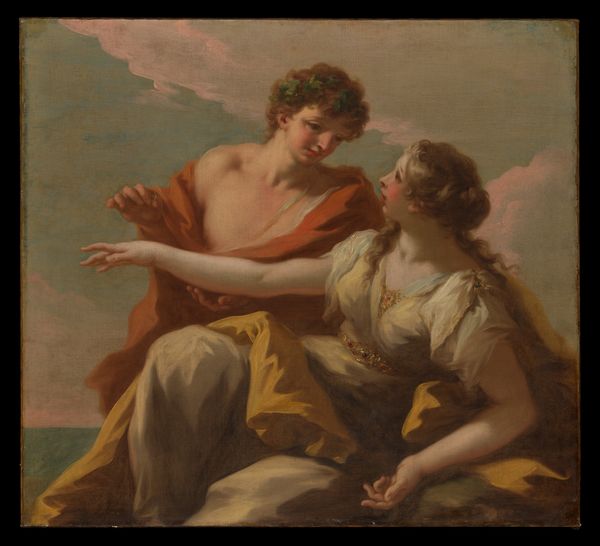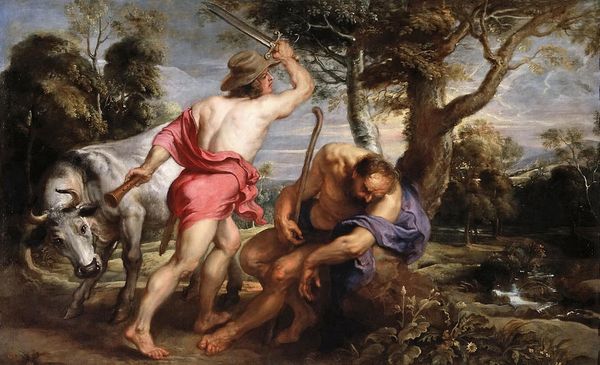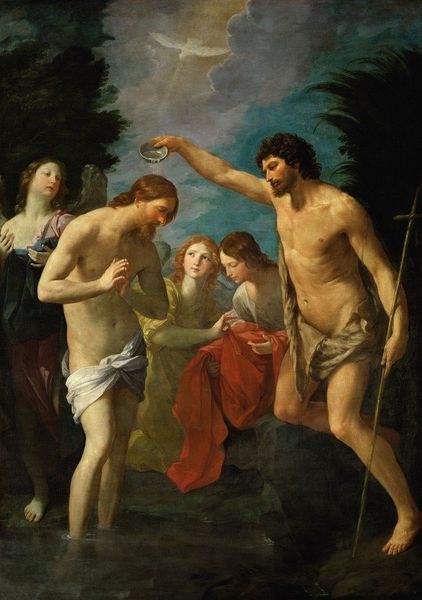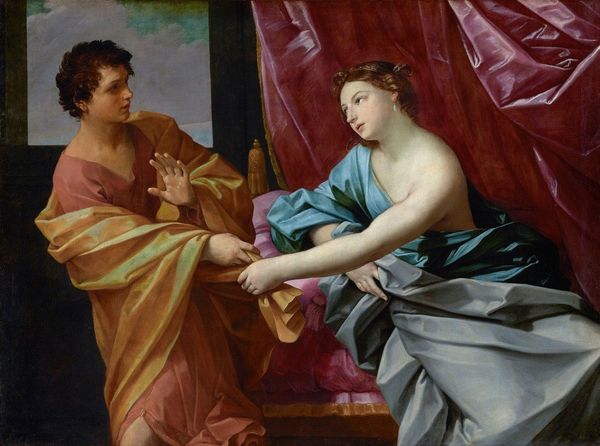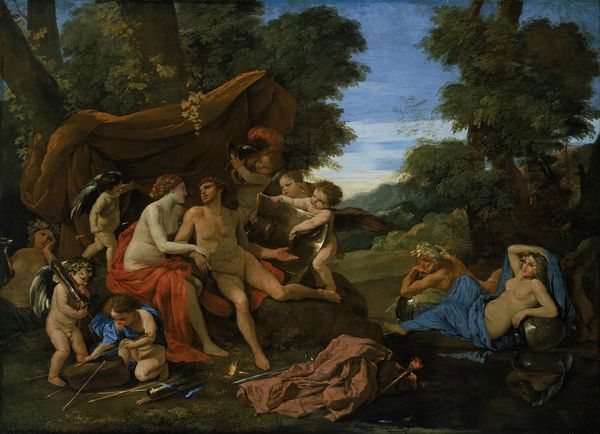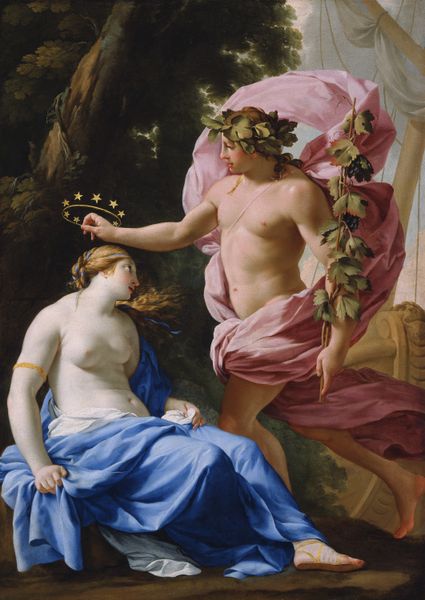
painting, oil-paint
#
allegory
#
narrative-art
#
baroque
#
painting
#
oil-paint
#
figuration
#
oil painting
#
history-painting
#
italian-renaissance
Copyright: Public Domain: Artvee
Curator: Guido Reni's canvas, "The Martyrdom of Saint Apollonia," captures a dramatic scene from Christian history, rendered in oil with that distinctive Baroque flair. What's your take on this piece, straight off the bat? Editor: Whoa. My gut reaction? It's...strangely gentle for a martyrdom! The colors are so soft, and there's even an angel floating about with a little sprig. Not exactly the horror show I expected. Curator: Indeed. Reni was known for idealizing even the most brutal of subjects. Apollonia was a 3rd-century saint, you see. According to legend, during a period of anti-Christian persecution in Alexandria, her teeth were violently extracted before she was burned at the stake. The tweezers being brandished certainly allude to this grim aspect of her story. Editor: The teeth... Right. I almost missed them entirely, distracted as I was by the cherubic messenger. The composition is so interesting –this cruel act framed almost serenely by the pillars, the landscape in the background. Does the placement of the angel above her signify divine intervention? Curator: Symbolically, certainly. The palm branch the angel carries traditionally signifies victory over death and martyrdom in Christian art. Apollonia's upward gaze and her serene expression amid the violence further reinforces her faith and acceptance of her fate. Even the architectural elements act as symbols - referencing the foundations of both civilization and religious authority. Editor: It's a bizarre mix, this soft palette clashing with the subject matter. It kind of humanizes it in a strange way, though, doesn't it? We see the cruelty, but also, this bizarre serenity and almost dream-like quality to it all. And maybe that is a way to reflect on the kind of convictions people are capable of, good or bad, Curator: A point well-made. It seems Reni was inviting his audience to meditate on themes of faith, suffering, and salvation – rather than just depict violence. He has transformed a brutal historical event into a carefully composed statement about steadfast belief. Editor: It makes me wonder, though, whether stripping away some of the raw horror diminishes the story’s power… or amplifies its more subtle, spiritual resonance? Either way, it sure is striking. Thanks, Guido. Curator: Food for thought, indeed. Thank you for joining me in thinking about this intriguing representation of faith and persecution.
Comments
No comments
Be the first to comment and join the conversation on the ultimate creative platform.
